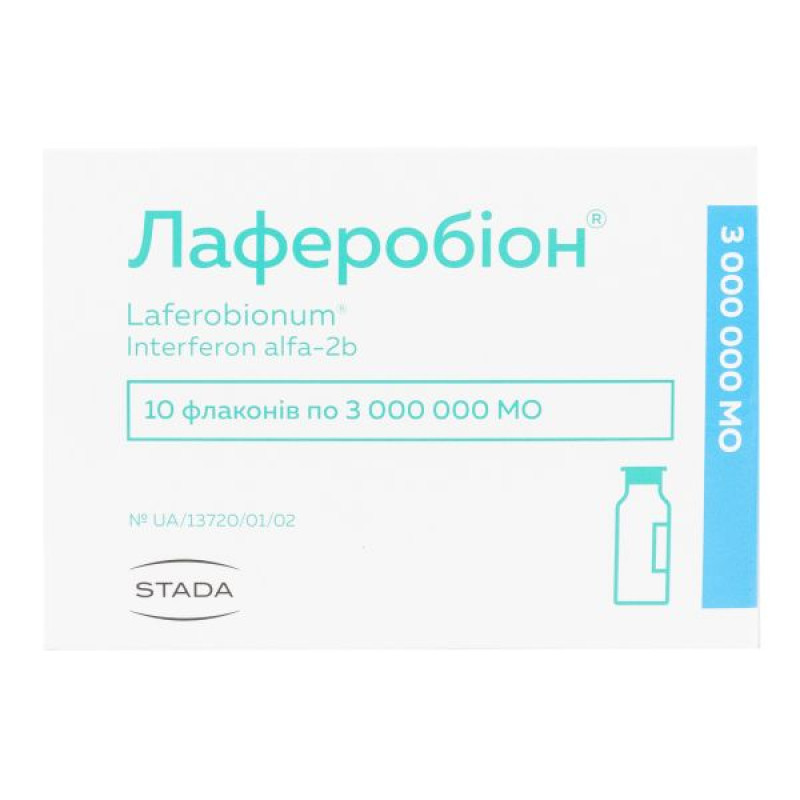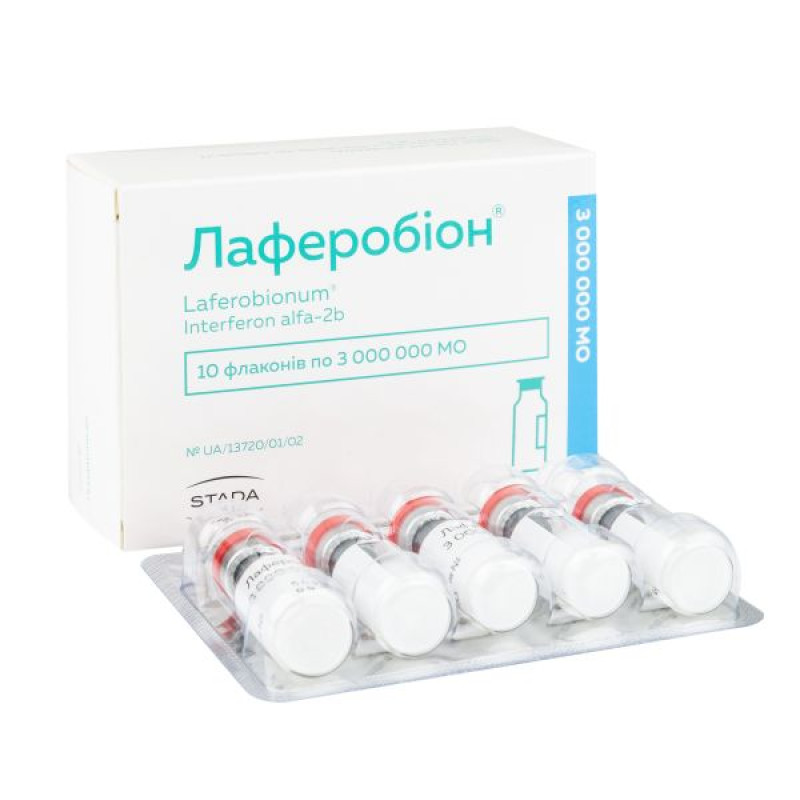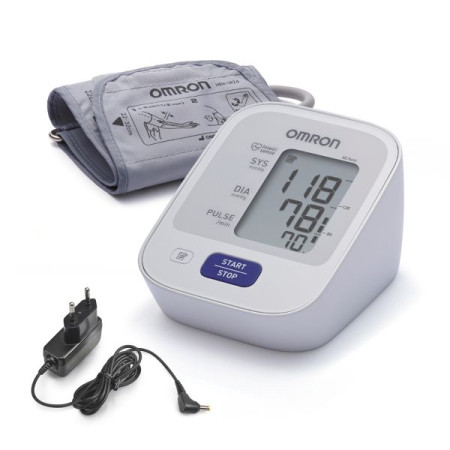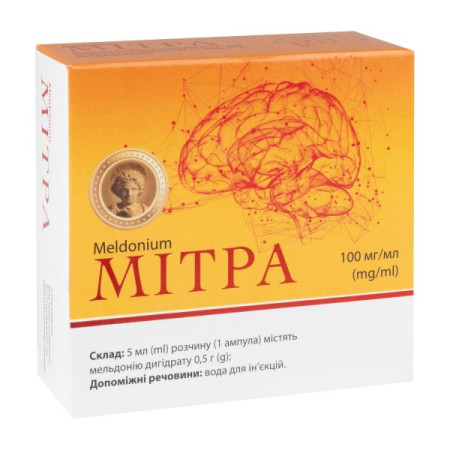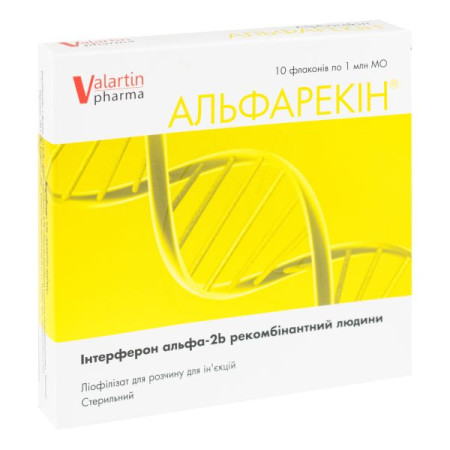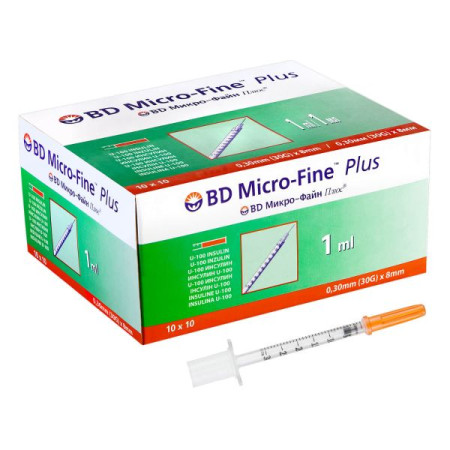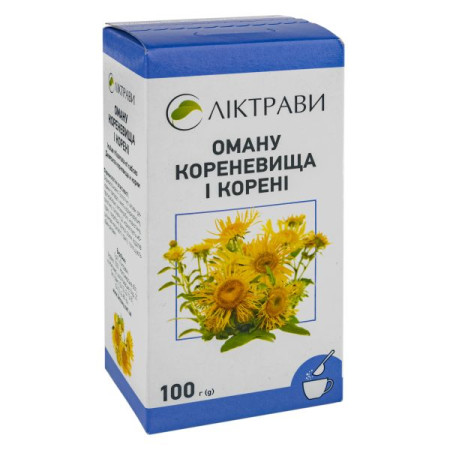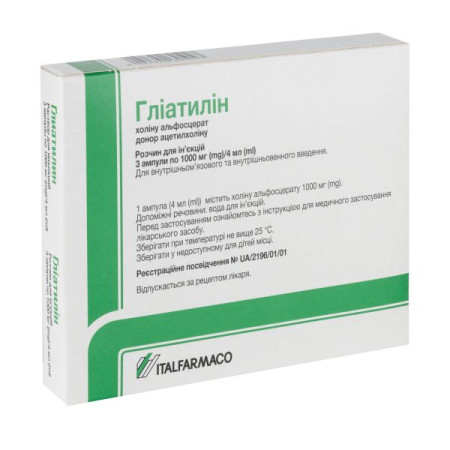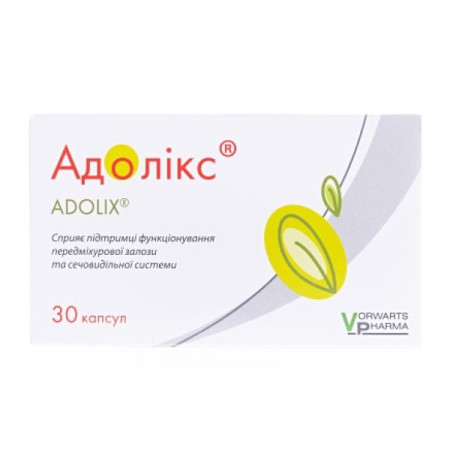Laferobion lyophilized powder for solution for injection 3000000 IU ampoule No. 10
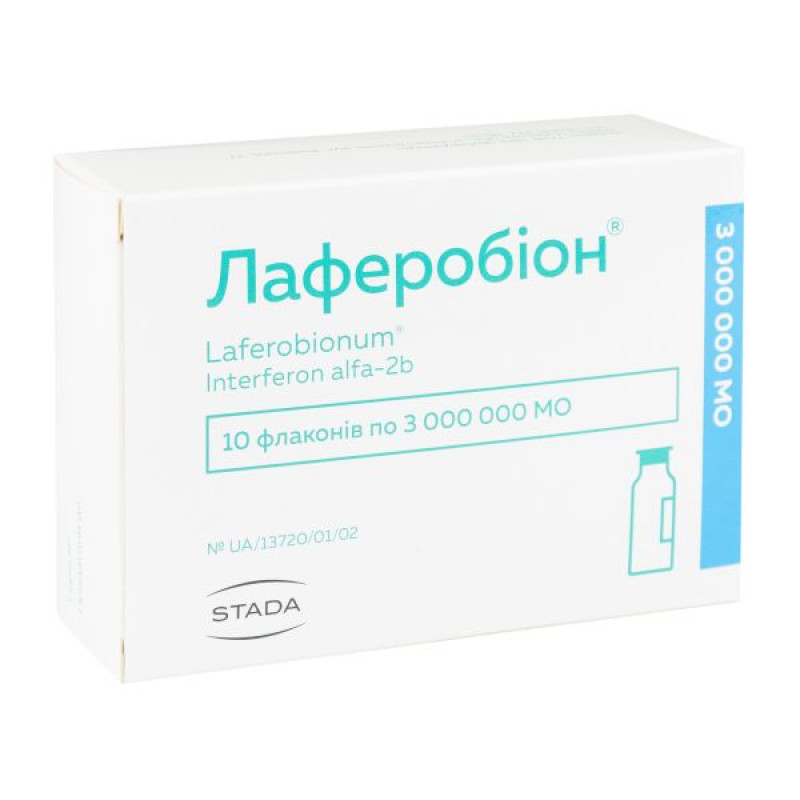
Instructions Laferobion lyophilized powder for solution for injection 3000000 IU ampoule No. 10
Composition
active ingredient: interferon alfa-2b;
1 vial contains: recombinant human interferon alpha-2b, with an activity of (1-18)·106 IU obtained from an E. coli clone by hybridization of a plasmid with the human leukocyte interferon alpha-2b gene.
excipients: sodium chloride, dextran-70, potassium dihydrogen phosphate, disodium phosphate dodecahydrate.
Dosage form
Lyophilisate for solution for injection.
Main physicochemical properties: white powder or porous mass; hygroscopic. As a natural leukocyte interferon, it has three main types of biological activity: immunomodulatory, antiviral, and antitumor.
Pharmacotherapeutic group
Immunostimulants. Interferon alpha-2b.
ATX code L03A B05.
Pharmacological properties
Pharmacodynamics.
Recombinant interferon alfa-2b is a highly purified water-soluble protein with a molecular weight of 19,300 daltons. The activity of the drug is measured in international units (IU). International units are determined by comparing the activity of recombinant interferon alfa-2b with the activity of the standard preparation of human leukocyte interferon, established by the WHO.
Causes an antiproliferative effect on tumor cells, also has antiviral and immunomodulatory effects.
The action of interferon alpha-2b is manifested by its binding to specific receptors on the cell surface membrane and the initiation of a complex of sequential intracellular reactions associated with the induction of a number of enzymes and the implementation of cellular functions, namely, the inhibition of virus replication in an infected cell and the reduction of tumor cell proliferation, with the implementation of immunomodulatory processes (such as enhancing the phagocytic activity of macrophages, increasing the specific cytotoxicity of lymphocytes to target cells).
Pharmacokinetics.
The pharmacokinetic properties of the drug have not been studied.
Indication
The drug is used in complex therapy in adults for:
acute and chronic viral hepatitis B (moderate and severe forms);
chronic hepatitis C;
acute and chronic septic diseases of a viral nature;
herpetic infections of various localization (shingles, multiple skin herpetic rashes, genital herpetic infection);
laryngeal papillomatosis;
malignant melanoma, uveal melanoma, renal cell carcinoma, superficial bladder cancer, ovarian and breast cancer, Kaposi's sarcoma on the background of HIV infection, chronic myelogenous leukemia, hairy cell leukemia, non-Hodgkin lymphomas, basal cell carcinoma, cutaneous T-cell lymphoma (mycosis fungoides).
Contraindication
Hypersensitivity to the components of the drug;
severe cardiovascular diseases (uncontrolled congestive heart failure, recent myocardial infarction, severe forms of arrhythmia);
psoriasis;
severe liver and/or kidney dysfunction, including metastases;
epilepsy and other CNS diseases (including functional);
chronic hepatitis on the background of progressive or decompensated liver cirrhosis;
chronic hepatitis in patients receiving or recently receiving immunosuppressive therapy (except for a short course of corticosteroids);
autoimmune hepatitis or other autoimmune diseases in history;
the patient has thyroid dysfunction;
the presence of severe visceral disorders in patients with Kaposi's sarcoma;
combination therapy with telbivudine;
suppression of myeloid hematopoiesis;
combination therapy with ribavirin when using Laferobion® as part of combination therapy for chronic hepatitis C.
Interaction with other medicinal products and other types of interactions
The drug should be used with caution simultaneously with opioid drugs, analgesics, hypnotics and sedatives (potentially exhibiting a myelosuppressive effect).
When used simultaneously with drugs that are metabolized by oxidation (including xanthine derivatives - aminophylline and theophylline), the possibility of the effect of Laferobion® on oxidative metabolic processes should be taken into account. The concentration of theophylline in the blood serum should be monitored and, if necessary, the dosage regimen adjusted.
Pulmonary infiltrates, pneumonitis, and pneumonia (in some cases fatal) have been reported rarely, with lung lesions more commonly reported with concomitant use of interferon alpha with shosaikoto (a Chinese herbal medicine).
When using the drug in combination with chemotherapeutic drugs (cytarabine, doxorubicin, teniposide, cyclophosphamide), the risk of developing life-threatening toxic effects (their severity and duration) increases.
When used simultaneously with zidovudine, the risk of neutropenia increases.
Application features
Some patients have experienced serious CNS adverse events, particularly depression, suicidal ideation and suicide attempts, during and after treatment with interferon alfa-2b, and even after treatment has been discontinued, mainly within the next 6 months. Suicidal ideation and suicide attempts were observed much more frequently in children and adolescents treated with interferon alfa-2b in combination with ribavirin than in adults (2.4% versus 1%), during treatment and within 6 months after treatment. As in adults, other psychiatric adverse events (e.g. depression, emotional lability and drowsiness) have also occurred in children and adolescents. Other CNS adverse events, including aggressive behaviour (sometimes directed against others, such as homicidal ideation), bipolar disorder, mania, confusion and mental status changes, have been observed with interferon alfa. Patients should be closely monitored for any symptoms of psychiatric disorders. If such symptoms appear, the physician should consider their potential seriousness and consider the need for appropriate treatment. If psychiatric symptoms persist, worsen, or suicidal thoughts occur, it is recommended that treatment with Laferobion® be discontinued and the patient be provided with appropriate psychiatric care.
Patients with clinical or anamnestic data on severe mental conditions
If treatment with interferon alfa-2b is necessary for adults with clinical or anamnestic data on severe psychiatric conditions, it should be initiated only after appropriate individual diagnosis and treatment of the psychiatric condition.
Patients with alcohol and drug addiction
An increased risk of developing psychiatric disorders or exacerbation of pre-existing psychiatric disorders during treatment with interferon alfa has been observed in patients with alcohol or drug dependence. If such patients require treatment with interferon alfa-2b, careful supervision is necessary during therapy and even after discontinuation of treatment.
Side effects, including prolongation of coagulation markers and liver dysfunction.
Moderate and severe side effects may require adjustment of the dosage regimen and sometimes discontinuation of Laferobion® therapy. Discontinuation of treatment with the drug is recommended in patients with chronic hepatitis who have prolonged coagulation markers, which may indicate liver failure.
Any patient who develops liver function abnormalities during treatment with Laferobion® should be closely monitored and, if necessary, therapy discontinued.
Hypotension
Hypotension may occur during the course of drug therapy or within two days after therapy and may require additional treatment.
The need for adequate hydration
Patients receiving Laferobion® therapy should be adequately hydrated, as some patients experience hypotension associated with dehydration. In such cases, rehydration may be necessary.
Fever
Since fever may be observed as a sign of the flu-like syndrome that commonly develops during interferon therapy, other causes of persistent fever should be excluded.
Patients with debilitating diseases
Laferobion® should be used with caution in patients with chronic debilitating diseases such as pulmonary diseases (e.g. chronic obstructive pulmonary disease) or in patients with diabetes mellitus predisposed to ketoacidosis. Patients with coagulation disorders (e.g. thrombophlebitis, pulmonary embolism) or severe myelosuppression should also be closely monitored.
Respiratory disorders
Pulmonary infiltrates, pneumonitis, and pneumonia, including fatal cases, have been reported in patients receiving interferon alpha. The etiology of these events is unknown. These events have been reported more frequently with the use of shosaikoto (a Chinese herbal medicine) in combination with interferon alpha. All patients should have a chest x-ray if fever, cough, shortness of breath, or other respiratory symptoms develop. Patients should be monitored closely for infiltrates on chest x-ray or signs of pulmonary dysfunction, and interferon alpha should be discontinued if necessary. Although these events have been reported more frequently in patients with chronic hepatitis C receiving interferon alpha, these events have also been reported in patients with cancer receiving interferon alpha. Prompt discontinuation of interferon alpha and corticosteroid therapy resolves pulmonary adverse events.
In some cases, after treatment with alpha interferons, adverse events from the organs of vision were observed, including retinal hemorrhages, "cotton wool" spots on the retina and obstruction of the retinal artery or vein. All patients should undergo an ophthalmological examination before starting therapy. All patients who complain of decreased visual acuity, visual field restriction or other ophthalmological symptoms during treatment with Laferobion® should immediately undergo a complete ophthalmological examination. Periodic ophthalmological examinations during therapy with Laferobion® are especially recommended in patients with disorders that may be associated with retinopathy, such as diabetes mellitus or arterial hypertension.
Treatment with the drug should be discontinued if new or worsening ophthalmological disorders occur.
Stun, coma, and encephalopathy
In some patients, mainly elderly, who took higher doses of the drug, cases of stunning and coma, including cases of encephalopathy, were observed. These effects are mostly reversible, and complete recovery from them in some patients takes up to three weeks. Seizures are very rare when taking high doses of the drug.
Patients with cardiac disorders
Adult patients with a history or clinical history of congestive heart failure, myocardial infarction, or arrhythmia should be closely monitored. In patients with cardiac disease and/or advanced cancer, ECG monitoring is recommended before and during treatment. Cardiac arrhythmias (mainly supraventricular arrhythmias) usually respond to conventional therapy, but discontinuation of Laferobion® may be necessary. There are no data on the use of combination therapy in children and adolescents with a history of cardiac disease.
Hypertriglyceridemia
Hypertriglyceridemia and exacerbation of hypertriglyceridemia, sometimes severe, have been observed, therefore monitoring of lipid levels is recommended.
Kidney and liver transplant rejection
Preliminary data suggest that interferon alpha therapy may be associated with an increased incidence of kidney transplant rejection. Cases of liver transplant rejection have also been reported.
Autoantibodies and autoimmune disorders
Autoantibodies and autoimmune disorders have been reported with alpha interferons. Patients predisposed to autoimmune disorders are at increased risk. Patients with evidence of autoimmune disorders should be monitored closely and the benefit/risk of continued interferon therapy should be reassessed. Vogt-Koyanagi-Harada syndrome (VKHS) has been reported in patients with chronic hepatitis C treated with interferon. This syndrome is a granulomatous inflammatory disorder affecting the eyes, auditory system, meninges, and skin. If there is evidence of VKHS, antiviral therapy should be discontinued and corticosteroid therapy should be considered.
Concomitant chemotherapy
The use of Laferobion® in combination with other chemotherapeutic agents (e.g. Ara-C, cyclophosphamide, doxorubicin, teniposide) increases the risk of toxicity, which may be life-threatening. The most common life-threatening adverse reactions are mucosal inflammation, diarrhea, neutropenia, renal failure, and electrolyte disturbances. Due to the risk of increased toxicity, careful dose selection of Laferobion® is required for concomitant use with chemotherapeutic agents. If Laferobion® is used with hydroxyurea, the frequency and severity of cutaneous vasculitis may increase.
Chronic hepatitis C
Combination therapy with ribavirin (when using Laferobion® as part of combination therapy for chronic hepatitis C).
All patients with chronic hepatitis C underwent liver biopsy before inclusion in the clinical trial, but in certain cases (e.g., patients with viral genotypes 2 and 3) treatment is possible without histological confirmation. Current recommendations for the management of such patients should be followed.
Monotherapy.
Thyroid disorders, either hypothyroidism or hyperthyroidism, have been reported uncommonly in adult patients treated with interferon alfa-2b for hepatitis C (2.8% of patients in clinical trials). Thyroid disorders were controlled with appropriate conventional therapy. The mechanism by which Laferobion® may affect thyroid status is unknown. Serum thyroid-stimulating hormone (TSH) levels should be determined before starting Laferobion®. If any abnormalities are detected, appropriate therapy should be initiated. If TSH levels can be maintained at normal levels with medical therapy, Laferobion® treatment may be initiated. If symptoms of thyroid dysfunction occur during Laferobion® treatment, TSH levels should be determined. In the presence of thyroid dysfunction, Laferobion® treatment may be continued if TSH levels can be maintained at normal levels. Discontinuation of Laferobion® does not lead to recovery of thyroid function impaired during treatment.
Patients co-infected with HIV and receiving highly active antiretroviral therapy (HAART) are at increased risk of lactic acidosis. Caution should be exercised when adding Laferobion® and ribavirin to HAART. Patients receiving Laferobion® and ribavirin in combination therapy and zidovudine are at increased risk of developing anemia.
Co-infected patients with cirrhosis receiving HAART are at increased risk of hepatic decompensation and death. Additional use of alpha interferons alone or in combination with ribavirin increases the risk in this category of patients.
Hepatitis C and B coinfection
Cases of hepatitis B reactivation (some with serious consequences) have been reported in patients co-infected with hepatitis B and C viruses and receiving interferon. The incidence of reactivation is low. All patients should be tested for hepatitis B before initiating interferon therapy for hepatitis C; patients co-infected with hepatitis B and C should be monitored according to current clinical guidelines.
Dental and periodontal disorders
Dental and periodontal disorders, which may lead to tooth loss, have been reported in patients receiving combination therapy with Laferobion® and ribavirin. In addition, dry mouth may cause damage to teeth and oral mucosa with prolonged use of Laferobion® and ribavirin. Patients should maintain good oral hygiene and have regular dental check-ups. In addition, some patients may vomit. If this occurs, it is recommended to rinse the mouth thoroughly afterwards.
Laboratory studies
Standard hematological and blood chemistry tests (complete blood count and differential, platelet count, electrolytes, liver enzymes, serum protein, bilirubin, and serum creatinine) are mandatory for all patients before and during systemic treatment with Laferobion®.
During the treatment of patients with chronic hepatitis B or C, the following laboratory monitoring schedule is recommended: 1st, 2nd, 4th, 8th, 12th, 16th week and then 1 time in 2 months throughout the course of treatment. If ALT increases to a value that is twice or more higher than the value that was before the start of therapy, treatment with Laferobion® can be continued if there are no signs of liver failure. In this case, the determination of ALT, prothrombin time, alkaline phosphatase, albumin and bilirubin should be carried out every 2 weeks.
In patients with malignant melanoma, liver function and white blood cell count (with formula) should be monitored weekly during remission induction and monthly during maintenance therapy.
Use during pregnancy or breastfeeding
There are no adequate data on the use of interferon alfa-2b in pregnant women. Animal studies have shown toxic effects on the fetus; the potential risk to humans is unknown. The drug is contraindicated during pregnancy or breastfeeding. Women of childbearing potential should use effective contraception.
There is no information on the excretion of the components of this drug into breast milk.
Because of the potential for adverse effects on the child, a decision should be made whether to discontinue breast-feeding or discontinue the drug, taking into account the need for the drug to the mother.
The ability to influence the reaction speed when driving or working with other mechanisms
The ability to drive may be reduced due to the development of weakness, drowsiness, and impaired consciousness during the use of the drug. If the above disorders are observed during treatment with the drug, you should refrain from driving vehicles and working with other mechanisms.
Method of administration and doses
The drug is administered in the form of a solution. Laferobion® solution is administered intravenously (drip), intramuscularly, subcutaneously, intradermally, intraperitoneally, intravesically.
When using the drug, the following treatment regimens are recommended:
acute viral hepatitis B: intramuscularly 1 million IU (in severe cases - 2 million IU) 2 times a day for 10 days; then, taking into account the clinical status of the patient, the administration of the drug can be extended to 2-3 weeks according to the above scheme or 1 million IU 2 times a week for several weeks;
chronic viral hepatitis B: intramuscularly 3 - 4 million IU 3 times a week for 2 months;
chronic hepatitis C: subcutaneously 3 million IU 3 times a week (every other day) in combination with ribavirin or as monotherapy (in case of contraindications or intolerance to ribavirin); the drug should be used for 3-4 months, after which HCV RNA should be determined; then continue treatment if HCV RNA is not detected; in monotherapy, the course of treatment is from 12 to 18 months, in combination with ribavirin - 6 months; with genotype 1 of the virus and a high content of viral DNA before the start of therapy, in the absence of HCV RNA in the blood serum by the end of 6 months of treatment, combination therapy can be continued for another 6 months, however, such negative factors as age from 40 years, male gender, progressive fibrosis should be taken into account;
Shingles: daily 1 million IU intramuscularly + 2 million IU in 5 ml of 0.9% saline solution subcutaneously at several points around the rash area; treatment duration 5–7 days;
cutaneous herpetic eruptions: daily intramuscularly or subcutaneously (around the lesion) at a dose of 2 million IU; treatment can be combined with local application (applications) to herpetic papules; the course of treatment is determined by the doctor;
Genital herpes infection: daily intramuscularly at a dose of 2 million IU in combination with local application (in the form of applications) to the area of the rash; the course of treatment is determined by the doctor;
laryngeal papillomatosis: 3 million IU/m2 subcutaneously 3 times a week (every other day) for 6 months or more; adjust the dose based on drug tolerance, begin treatment after surgical (laser) removal of tumor tissue;
Malignant melanoma: as an adjunct to surgical treatment and for induction of remission intravenously 20 million IU/m2 (infusion over 20 minutes) 5 times a week for
4 weeks; maintenance therapy – subcutaneously 10 million IU/m2 3 times a week (every other day) for 48 weeks.
If severe side effects develop, namely a decrease in the number of granulocytes (less than 500/mm3), an increase in ALT/AST (5 times the upper limit of normal), the drug should be discontinued until the indicators normalize. Treatment should be resumed at half the dose. If intolerance persists and the number of granulocytes decreases to 250/mm3 or the activity of ALT and/or AST increases (10 times the upper limit of normal), the drug should be discontinued;
for uveal melanoma (in the case of treatment in combination with tumor photodestruction and beta-application), the following treatment regimen is possible: parabulbar 1 million IU (diluted in 1 ml of water for injection) daily for 10 days; repeated 10-day administrations are carried out twice after 20 days; total course – 48 weeks; the need for repeated courses after 45 days is not excluded;
renal cell carcinoma: intramuscularly 3 million IU daily for 10 days; total course – 30 million IU, repeated courses should be carried out at intervals of 3–5 weeks for 6 months, then at intervals of 1.5–2 months for a year; as induction therapy, 10 million IU/m2 (up to 18 million IU/m2 per day) intramuscularly or subcutaneously; the indicated doses are achieved by increasing the previous dose by 3 million IU/m2 every 3 days (the first 3 days – 3 million IU/m2, the second 3 days – 6 million IU/m2, the third 3 days – 9 million IU/m2, etc. up to 18 million IU/m2); doses should be adjusted taking into account the tolerability of the drug; with good tolerability, the maximum dose is 36 million IU/m2; The duration of induction therapy is 3 months, after which the question of discontinuing the drug or continuing treatment should be decided if remission or stabilization of the condition is present;
for maintenance treatment, the drug should be administered in the same doses 3 times a week for at least 6 months;
superficially localized bladder cancer: intravesically from 30 million IU to 50 million IU weekly for 8-12 weeks; for carcinoma in situ, 60-100 million IU per instillation weekly for 12 weeks; before administering the drug, the patient should refrain from taking fluids for 8 hours; before administering the drug, the bladder should be emptied; the drug should be administered with a sterile syringe through a catheter into the bladder cavity, where it should remain for 2 hours, while the patient should change body position every 15 minutes (for better interaction of the drug with the bladder mucosa); after 2 hours, the bladder should be emptied;
Ovarian cancer: intraperitoneally (into drainage) during surgery and for the next 5 days, 5 million IU; then intramuscularly, 3 million IU for 10 days between chemotherapy courses; total course dose - 90 million IU; subsequent courses (3 million IU daily for 10 days) can be administered at intervals of 2-3 months for 1-1.5 years;
breast cancer: intramuscularly 3 million IU daily for 10 days; repeated courses should be carried out within a year with an interval of 1.5 - 2 months, then 2 - 3 months (depending on the clinical status); it is advisable to alternate courses of laferobionotherapy with courses of chemotherapy (or radiation therapy);
Kaposi's sarcoma on the background of HIV infection: the following treatment regimens are possible:
- intramuscularly 3 million IU daily for 10 days; combine treatment with chemotherapy with prospidin; repeated courses - once a month for 6 months;
- intravenously drip over 30 minutes at 50 million IU (30 million IU/m2) daily for 5 consecutive days or with an interval of 1 day, after which a minimum 9-day break is required before starting a new 5-day course; this regimen can be maintained continuously, except in cases of rapid disease progression or severe intolerance to the drug;
Hairy cell leukemia: intramuscularly or subcutaneously 2-3 million IU/m2 until remission is achieved, then 3 times a week (every other day); average duration of treatment is 12 months; dose should be adjusted based on drug tolerability;
non-Hodgkin lymphomas: intramuscularly or subcutaneously 3 million IU/m2 (gradually increasing the dose to 5 million IU/m2 under the supervision of a physician) 3 times a week (as an adjunct to chemotherapy) or 3 million IU 3 times a week for 12 to 18 months (as maintenance treatment in remission due to chemotherapy);
basal cell carcinoma: 10 million IU (dissolved in 1 ml of water for injection) – into the base and inside the tumor (using a 1 ml syringe); if the lesion area is less than 2 cm2, inject 0.15 ml of the drug solution (1.5 million IU) 3 times a week (every other day) for 3 weeks; the total dose should not exceed 13.5 million IU; if the lesion area is from 2 to 10 cm2, the drug dose should be 0.5 million IU/cm2 (but not less than 1.5 million IU for the first injection); inject 3 times a week (every other day) for 3 weeks; treat one lesion area at a time; in the absence of positive dynamics (appearance, lesion size, degree of redness, biopsy data) after 2−3 months of treatment, surgical treatment of the disease should be considered;
T-cell lymphoma (mycosis fungoides) in the ulcerative stage: intradermally (into the superficial layer of the dermis below the spot or ulcer) 1-2 million IU (dissolved in 0.5 ml of water for injection) 3 times a week for 4 weeks; before administration, treat the affected area with a cotton swab with alcohol; administer the drug solution with a thin needle (30 gauge) using a 1 ml syringe; during administration, the needle should be in a position almost parallel to the body surface; deeper (subcutaneous) administration should be avoided.
Preparation of the drug solution.
The drug solution should be prepared immediately before administration. Water for injection is used as a solvent (if the solution is prepared for subcutaneous, intradermal or intramuscular administration). To prepare the solution, dissolve the contents of the vial in 1 ml of water for injection.
If the drug solution is prepared for intraperitoneal or intravesical administration, 0.9% sodium chloride solution is used as a solvent (which is taken so that the concentration of Laferobion® in the solution is at least 0.3 million IU/ml).
Preparation and administration of intravenous infusion of the drug.
30 minutes before the start of the Laferobion® infusion, an infusion of 0.9% sodium chloride solution is started (at a rate of 200 ml/h) and is completed immediately before the administration of the drug.
To prepare the infusion solution, Laferobion® is first dissolved in water for injection (at the rate of 1 ml of water per dose of the drug to be administered), then the required amount of the drug (dose in 1 ml of aqueous solution) is taken and added to 50 ml of 0.9% isotonic sodium chloride solution; the prepared solution is administered intravenously drip over 30 minutes. After the administration of Laferobion® is completed, the infusion of 0.9% isotonic sodium chloride solution (at a rate of 200 ml/h) should be continued for 10 minutes.
Children
There is no experience in children.
Overdose
No cases of overdose with Laferobion® have been described to date. However, as with any drug overdose, symptomatic therapy with monitoring of vital organ functions and careful observation of the patient's condition is recommended.
Side effects
If Laferobion® is used in combination with ribavirin in patients with chronic hepatitis C, additionally see the instructions for medical use of ribavirin regarding undesirable effects associated with ribavirin.
The most common adverse events in hairy cell leukemia were fever, fatigue, headache, and myalgia. Fever and fatigue resolved within 72 hours of discontinuation or interruption of the drug.
Adults
When interferon alfa-2b was used to treat hepatitis C, patients received a course of interferon alfa-2b alone or in combination with ribavirin for one year. All patients received 3 million IU of interferon alfa-2b three times a week.
Table 1 presents the adverse events (treatment-related) in untreated patients who received treatment for one year. Most adverse events were mainly mild or moderate in severity.
Table 1
Adverse reactions that occurred during clinical trials or post-marketing use of interferon alfa-2b as monotherapy or in combination with ribavirin
| Organ system classes | Adverse reactions |
| Infections and infestations | Pharyngitis*, viral infection* Bronchitis, sinusitis, herpes simplex, rhinitis Bacterial infection Pneumonia§, sepsis Hepatitis B reactivation in patients with HCV/HBV coinfection |
| Blood and lymphatic system disorders | Leukopenia Thrombocytopenia, lymphadenopathy, lymphopenia Aplastic anemia Pure red cell aplasia, idiopathic thrombocytopenic purpura, thrombotic thrombocytopenic purpura |
| Immune system disorders§ | Systemic lupus erythematosus, vasculitis, rheumatoid arthritis (new onset or exacerbation), Vogt-Koyanagi-Harada syndrome, acute hypersensitivity reactions including urticaria, angioedema, bronchospasm, anaphylactic reaction§ |
| Endocrine system disorders | Hypothyroidism§, hyperthyroidism§ Diabetes, diabetes exacerbation |
| Metabolism and metabolic disorders | Anorexia Hypocalcemia, dehydration, hyperuricemia, thirst Hyperglycemia, hypertriglyceridemia§, increased appetite |
Mental disorders§ | Depression, insomnia, fear, emotional lability*, agitation, nervousness Confusion, sleep disturbances, decreased libido Suicidal thoughts Suicide, suicide attempts, aggressive behavior (sometimes directed at others), psychosis, including hallucinatory Homicidal ideation, altered mental status§, mania, bipolar disorder |
Nervous system disorders§ Very often | Dizziness, headache, difficulty concentrating, dry mouth Tremor, paresthesia, hypoesthesia, migraine, hot flashes, drowsiness, taste disturbance Peripheral neuropathy Cerebrovascular hemorrhage, cerebrovascular ischemia, epileptic seizure, impaired consciousness syndrome, encephalopathy Mononeuropathy, coma§ |
Visual impairment | Decreased visual acuity Conjunctivitis, vision disorders, lacrimal gland disorders, eyeball pain Retinal haemorrhage§, retinopathy (including macular oedema), retinal vein or artery obstruction§, optic neuritis, optic disc oedema, loss of visual acuity or visual fields, retinal “cotton wool” spots§ Serous retinal detachment |
| Hearing and balance disorders | Dizziness, tinnitus Hearing impairment or loss |
| Cardiac disorders | Palpitations, tachycardia Pericarditis Cardiomyopathy Myocardial infarction, cardiac ischemia Congestive heart failure, pericardial effusion, arrhythmia |
| Vascular disorders | Arterial hypertension Peripheral ischemia, hypotension§ |
Respiratory, thoracic and mediastinal disorders | Shortness of breath, cough* Epistaxis, respiratory disorders, nasal congestion, rhinorrhea, dry nonproductive cough Pulmonary infiltrates§, pneumonia§ Pulmonary fibrosis, pulmonary arterial hypertension# |
Gastrointestinal disorders | Nausea/vomiting, abdominal pain, diarrhea, stomatitis, dyspepsia Ulcerative stomatitis, right upper quadrant abdominal pain, glossitis, gingivitis, constipation, diarrhea Pancreatitis, ischemic colitis, ulcerative colitis, gingival bleeding Periodontal disorder unspecified, dental disorder unspecified, tongue pigmentation§ |
| Hepatobiliary system disorders | Hepatomegaly Hepatotoxicity (including fatal outcomes) |
Skin and subcutaneous tissue disorders | Alopecia, pruritus*, dry skin*, rash*, increased sweating Psoriasis (new onset or exacerbation)§, rash maculopapular, rash erythematous, eczema, erythema, skin disorder Stevens-Johnson syndrome, toxic epidermal necrolysis, erythema multiforme |
| Musculoskeletal and connective tissue disorders | Myalgia, arthralgia, musculoskeletal pain Arthritis Rhabdomyolysis, myositis, leg cramps, back pain |
| Renal and urinary disorders | Frequent urination
Specifications
Characteristics
Active ingredient
Interferon alfa-2b
Adults
Can
ATC code
L ANTINEOPLASTIC AND IMMUNOMODULATORS; L03 IMMUNOSTIMULATORS; L03A IMMUNOSTIMULATORS; L03A B Interferons; L03A B05 Interferon alpha-2b
Country of manufacture
Ukraine
Diabetics
Can
Dosage
3000000 МО
Drivers
With caution
For allergies
With caution
For children
It is impossible.
Form
Vials
Method of application
Injections
Nursing
It is impossible.
Pregnant
It is impossible.
Primary packaging
ampoule
Producer
FZ "Biopharma" LLC
Quantity per package
10 bottles
Trade name
Laferobion
Vacation conditions
By prescription
Reviews
There are no reviews for this product. There are no reviews for this product, be the first to leave your review.
Answers & questions
Add your question and we will answer as soon as possible.
No questions about this product, be the first and ask your question.
You are watched
Alfarequin lyophilized powder for solution for injection 1000000 IU vial No. 10
In stock
1 991.00 грн.
|







